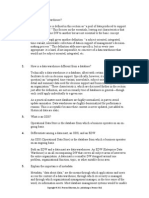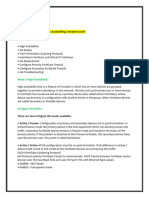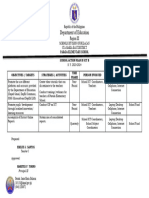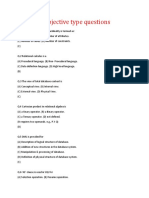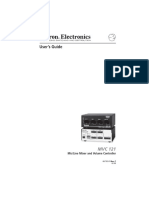0% found this document useful (0 votes)
46 views3 pagesData Warehouse Essentials Guide
A data warehouse is a centralized repository designed for analytical reporting and data analysis, characterized by being subject-oriented, integrated, time-variant, and non-volatile. Its lifecycle includes planning, design, implementation, operation, and evolution stages, while its architecture consists of data sources, an ETL layer, the data warehouse itself, an OLAP layer, and front-end tools. Key applications include business intelligence, data mining, performance management, and CRM, with challenges such as data quality, integration, scalability, performance, and user adoption.
Uploaded by
Masubo PhelixCopyright
© © All Rights Reserved
We take content rights seriously. If you suspect this is your content, claim it here.
Available Formats
Download as DOCX, PDF, TXT or read online on Scribd
0% found this document useful (0 votes)
46 views3 pagesData Warehouse Essentials Guide
A data warehouse is a centralized repository designed for analytical reporting and data analysis, characterized by being subject-oriented, integrated, time-variant, and non-volatile. Its lifecycle includes planning, design, implementation, operation, and evolution stages, while its architecture consists of data sources, an ETL layer, the data warehouse itself, an OLAP layer, and front-end tools. Key applications include business intelligence, data mining, performance management, and CRM, with challenges such as data quality, integration, scalability, performance, and user adoption.
Uploaded by
Masubo PhelixCopyright
© © All Rights Reserved
We take content rights seriously. If you suspect this is your content, claim it here.
Available Formats
Download as DOCX, PDF, TXT or read online on Scribd
/ 3
















































